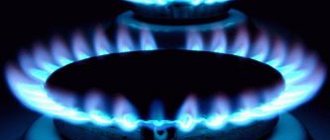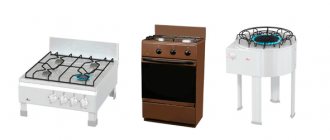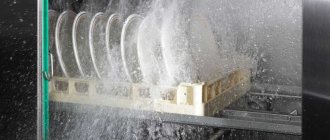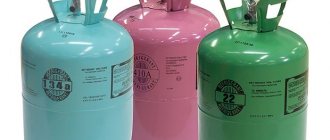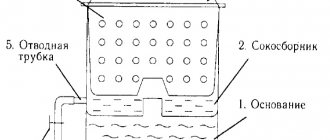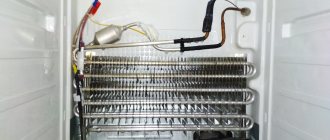Gas instantaneous water heaters were popular in the last century, but even now they have not lost their relevance. During this time, the devices were improved, however, the basic structure of the gas water heater remained unchanged.
A gas water heater of any model operates on the principle of a flow-through heater. The design of devices from different manufacturers differs only in the presence of additional functions and design. The main components of the flow heater are as follows:
- frame;
- pipes for connecting gas and water;
- chimney;
- water and gas unit;
- heat exchanger;
- the combustion chamber;
- igniter and burner;
- ignition system;
- set of sensors.
Modern models with automatic ignition are equipped with an electronic control unit. Such devices include a column with a turbine. A blower fan has been added to the design of the water heater. A closed-type combustion chamber and a modulation burner are installed, which allows you to smoothly change the flame height.
The basic design of a flow-through gas water heater is the same for all models, so let’s look at the design of a Neva brand water heater.
External column elements
Externally, the gas water heater consists of the following components:
- Steel casing – covers the front and sides of the column. For visual control of combustion, a viewing window is installed on the front panel of the casing. Below the window there are gas and water adjustment handles. The temperature of the outlet liquid is displayed by the LCD display.
- The front panel usually houses the controls.
- At the top there is a chimney pipe.
- The pipes protrude from underneath the casing. A cold water pipeline is connected to one of them to supply cold water to the column. The other is a pipe for discharging heated water. The hot water pipeline is connected to it. The third pipe is used for gas supply. A pipe for connecting the chimney protrudes from under the casing on top.
The back wall serves as the basis of the device, since all working units and the casing are attached to it. The part is made of galvanized steel. On the back wall there are mounting holes for fixing the speaker to the wall with brackets.
Gas water heaters of the Neva and Astra brands are similar in design.
Column internals
The working components of the gas water heater are hidden under the casing:
- The cold water supply pipe is connected to the water block. This unit has a mechanism with a handle for adjusting the liquid pressure. The water block has a plug with a safety valve. The unit is used to drain water in case of repair or release of excess pressure.
- A gas unit is located next to the water block. Together they form a single system. The gas block is equipped with an adjusting rod with a handle, which can be turned to achieve the optimal water temperature at the outlet of the tap. The gas pipeline connection pipe is connected to the block through a solenoid valve. In the event of a lack of draft, the burner flame goes out and other emergency situations, the shut-off unit shuts off the gas supply. In a normal situation, the valve simply cuts off the gas when the column is turned off.
- The gas block is connected by a pipe to the manifold. Nozzles are installed on the back of it, supplying gas to the burner. A spark plug is connected to the manifold at the front, supplying a spark to the igniter. A burner flame sensor located in the combustion chamber is installed nearby.
- A copper heat exchanger is located above the collector. It consists of a curved pipe with fins. The unit takes the heat from the burning gas and gives it to water. Cold water is supplied to the heat exchanger through the water unit. The outlet of the heating unit is connected to the hot liquid outlet pipe. Overheat protection and temperature control sensors are also installed here. One of them is a thermometer that sends readings to the LCD display.
- Between the combustion chamber and the chimney pipe there is a combustion product exhaust system. In essence, this is another chamber with partitions. The jumpers form channels that direct combustion products into the chimney. There is a chimney draft control sensor inside the chamber. It is connected via an electrical circuit to a sensor that monitors overheating.
- There are two blocks located at the bottom of the water heater body. One of them is for installing batteries. The second is the control unit. From the electronic control module, wires are connected to all geyser sensors.
The external and internal structure of devices of different brands is similar. The design of components and the presence of additional functions may differ.
The Oasis brand geyser has a similar device as the Neva. The difference is the presence of an additional “winter-summer” function. A switch installed on the front panel turns off some of the burners. In summer, this function helps save gas consumption.
Description and principle of operation of a battery-powered geyser
The batteries are installed in heating gas water heaters operating in flow mode .
It makes no sense to use batteries in boilers that heat a house, since the power reserve is not enough for the circulation pump. The heater is constantly in one of three modes : off, standby and heating.
Electricity is used for correct operation:
- control boards;
- gas valve;
- sensors for pressure at the inlet (flow sensor) and temperature of water at the outlet of the column, gas, ionization and removal of combustion products;
- ignition electrode.
In the off mode, when water is supplied, the control unit will not turn on. The gas valve is not energized, it is closed, and this ensures safety.
In standby mode , voltage is applied to the control unit and the desired water temperature is set.
After opening the tap on the mixer, the water brings the reducer (frog) and the gas valve into working condition. At the same time, the gas mechanism rod acts on the microswitch and turns on the column. If the water pressure and fluid flow rate are sufficient, a voltage pulse is generated on the ignition electrode, igniting the gas.
As the column enters operating mode, the control unit monitors the presence of a flame (ionization sensor), the flow of burned gas in the exhaust pipe exiting into the ventilation system, and the water temperature. The specified water heating mode is maintained by adjusting the gas supply. If the sensor readings are “incorrect,” the device turns off.
When the tap is turned off , the rods of the “frog” and the gas valve return to their original position, the supply of voltage to the control unit is stopped, and the column goes into standby mode.
Types of burner ignition
A modern instantaneous gas water heater is produced with automatic ignition and a manual pilot ignition system.
For economic reasons, manual ignition is unprofitable. The system consists of a piezoelectric element activated by pressing a button. Pressing a key produces a spark that ignites the igniter. The operation is simple, but the igniter constantly burns throughout the day, consuming gas. It is irrational to turn it off, since you will often have to re-ignite it when you need to consume hot water.
Auto-ignition occurs immediately after opening the hot water tap:
- The first operating principle of electronic ignition is based on batteries. The waiting igniter does not light. When the mixer tap is opened, the pressure in the water supply changes and the sensor gives a signal to the electronic unit to ignite. The energy from the batteries creates a spark. The flame lit on the igniter ignites the burner. Having done its job, the igniter turns off until the next start. Battery ignition does not require much energy. The battery charge lasts for a year.
- The second operating principle of auto-ignition is based on a hydrogen generator. The instantaneous gas water heater is equipped with a turbine instead of batteries. It is driven by the flow of water created in the water supply when the mixer tap is opened. The hydrogenerator produces a spark that ignites the igniter.
Gas water heaters with automatic ignition are beneficial due to lower gas consumption and ease of use.
Types of combustion chambers
Combustion chambers are of two types:
- Manufacturers most often install an open or atmospheric chamber on hot water columns due to the simplicity and low cost of the design. The circulation of air required to maintain combustion enters the chamber naturally.
- Air is pumped into the closed chamber by a fan. Such geysers are called turbocharged.
The creation of forced draft allows the water heater to operate under any conditions. A unit with an open chamber will not ignite if there is no draft. A similar nuisance occurs in bad weather conditions when the wind blows into the chimney.
Gas water heater design
An instantaneous water heater differs in the type of gas combustion chamber:
- Open gas combustion chamber. The oxygen necessary for the combustion process is taken from the air naturally without the use of additional mechanisms. Another name for devices of this type is atmospheric;
- Closed gas combustion chamber. Oxygen is also taken from the air, but is forcibly supplied to the combustion zone using additional mechanisms. Another name is turbocharged, supercharged.
The principle of operation of a flow-through gas device for heating water
The principle of operation of a gas water heater can be briefly described as follows: open the hot water tap - the burner lights up, the water flow stops - the burner goes out. In more detail it happens like this:
- When the tap is opened, water begins to move. The action of the flow triggers the water unit. The mechanism acts on the gas unit. The valve opens and gas is supplied to the burner, where it is ignited by the igniter.
If the pressure in the tap is weak, the column burner will not light.
- The water is heated in a heat exchanger. The liquid circulating through the coil is heated, after which it flows through the pipeline to the mixer.
- During combustion, air enters the chamber naturally through the technological openings of the casing and the viewing window. Exhaust gases escape through the chimney. Natural air circulation creates draft. If it is not there, the sensors give a signal to turn off the burner.
- When the water tap is closed, the water and gas units are activated. The gas supply will stop, followed by the burner going out.
Turbine-type geysers work similarly. The only difference is the method of supplying air inside the closed chamber. The blower fan is responsible for this function. The chimney and discharge pipeline are double-walled pipes. She is taken outside. Combustion products are removed through the internal channel, and clean air is supplied from the street through the external passage.
Main malfunctions of the flow unit
Among the main malfunctions, the most common is the attenuation of the burner flame. There are 4 common reasons:
- there is no draft in the chimney;
- the sensor has failed;
- the membrane of the water unit is damaged;
- poor water flow due to a clogged filter installed on the inlet pipe.
The user encounters the problem of weak water heating after 1–2 years of using the column. The heat exchanger coil inside becomes overgrown with scale. The harder the water, the faster this happens. They get rid of scale by washing the coil with acid solutions.
In the event of depressurization of connections, the column overheats immediately after the water supply stops. The cause and location of the leak is determined by the droplets formed. Connections are tightened and gaskets are replaced.
Modern geysers are manufactured with a variety of sensors to ensure safe use of the unit. The main disadvantage is the complexity of installation. You will need to cut out a window in the walls for the chimney. Gas service workers have the right to connect the water dispenser only when the owner has completed all permits.
Basic faults
The speaker does not turn off
The most common cause of this malfunction may be the loss of mobility of the rod, which includes the electromagnetic and/or mechanical gas valves. The deterioration of the mobility of the rod can be affected by various types of contaminants that have gotten into the gap between the rod and the body of the water unit. In this situation, the simplest washing of this device will help. The difficulty of returning the rod to its original position can also be affected by a dead spring, the force of which has become insufficient to return the rod to its original state. In this situation, the spring must be replaced.
Lights up and goes out
This failure can be caused by two reasons:
- The ionization sensor is faulty.
- The membrane installed in the water unit has failed.
Both of these faults can be corrected by replacing the sensor or membrane.
Doesn't light up
This malfunction can have many causes. In geysers that are equipped with a draft sensor, a breakdown of this sensor may prevent normal ignition. Also, the column may not light up if there is low water pressure in the water line. The same can apply to gas pressure. Lack of ignition can also be caused by the fact that the gas burner is simply clogged. Another reason for this malfunction may be failure of the water block membrane, or failure of one of the sensors.

